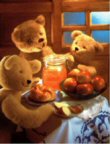
Natural Honey
Spokane Washington
Cheney, Washington
Phone Number - 1-509-299-9085
E-Mail - Jim
or - Jenine
Revised - 11/29/2025

|
Millers Homestead
Natural Honey Spokane Washington |
14606 S. Stangland Rd Cheney, Washington Phone Number - 1-509-299-9085 E-Mail - Jim or - Jenine Revised - 11/29/2025 |
| Honey Tips |